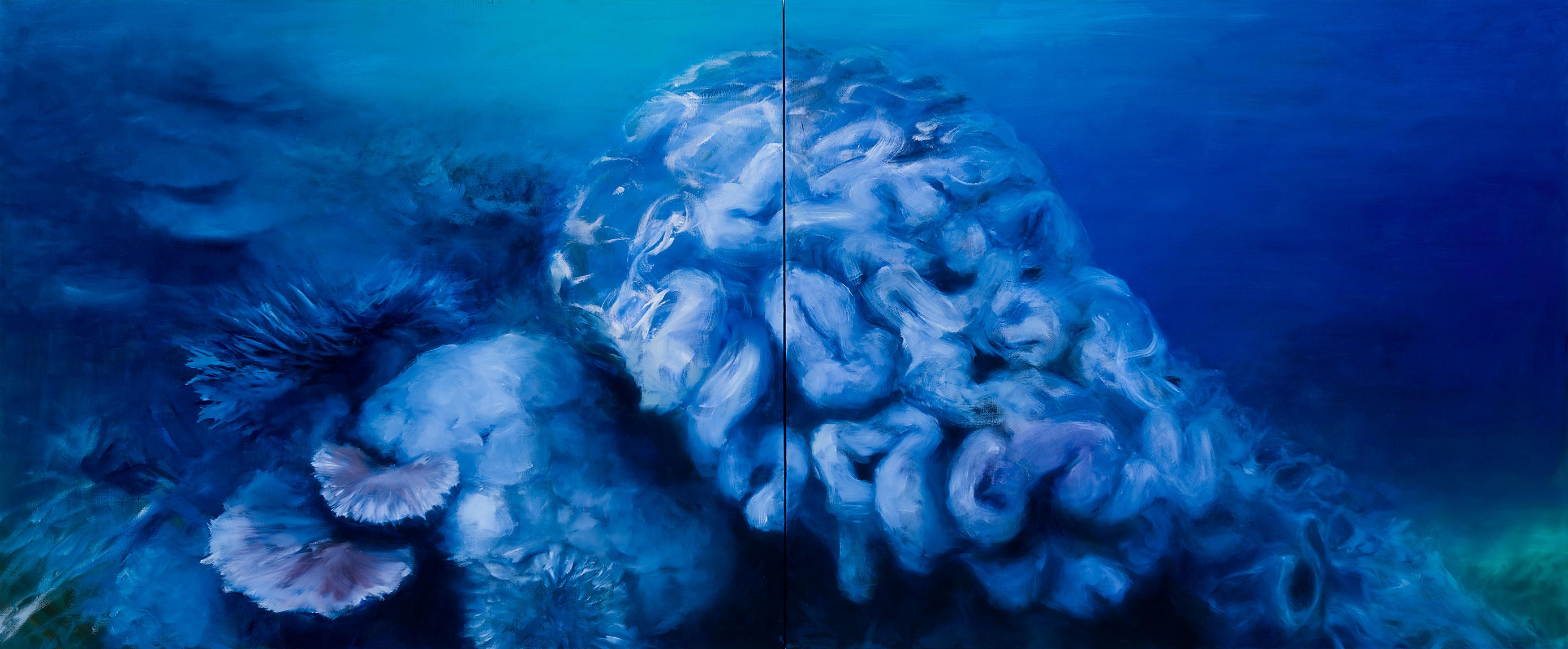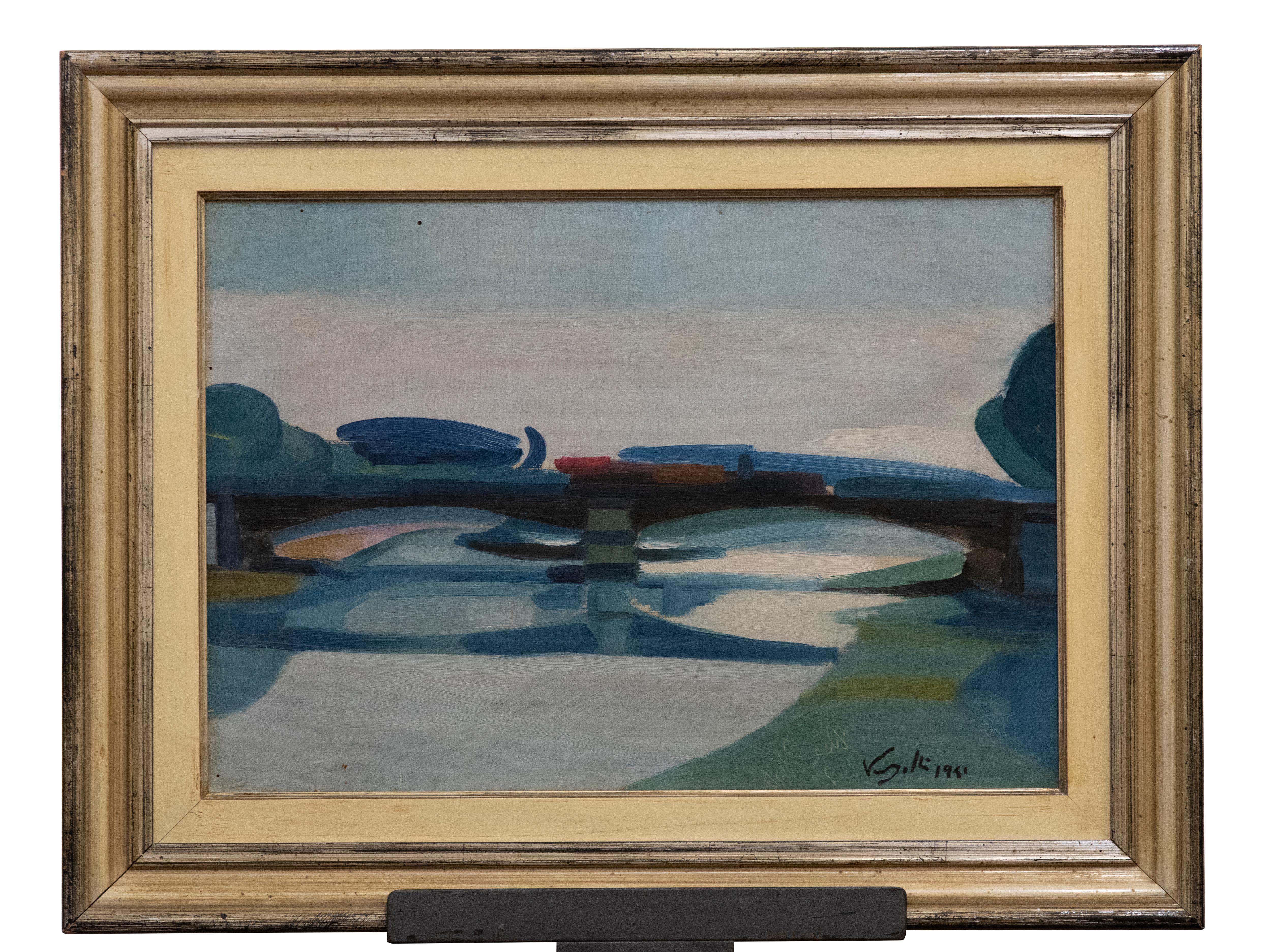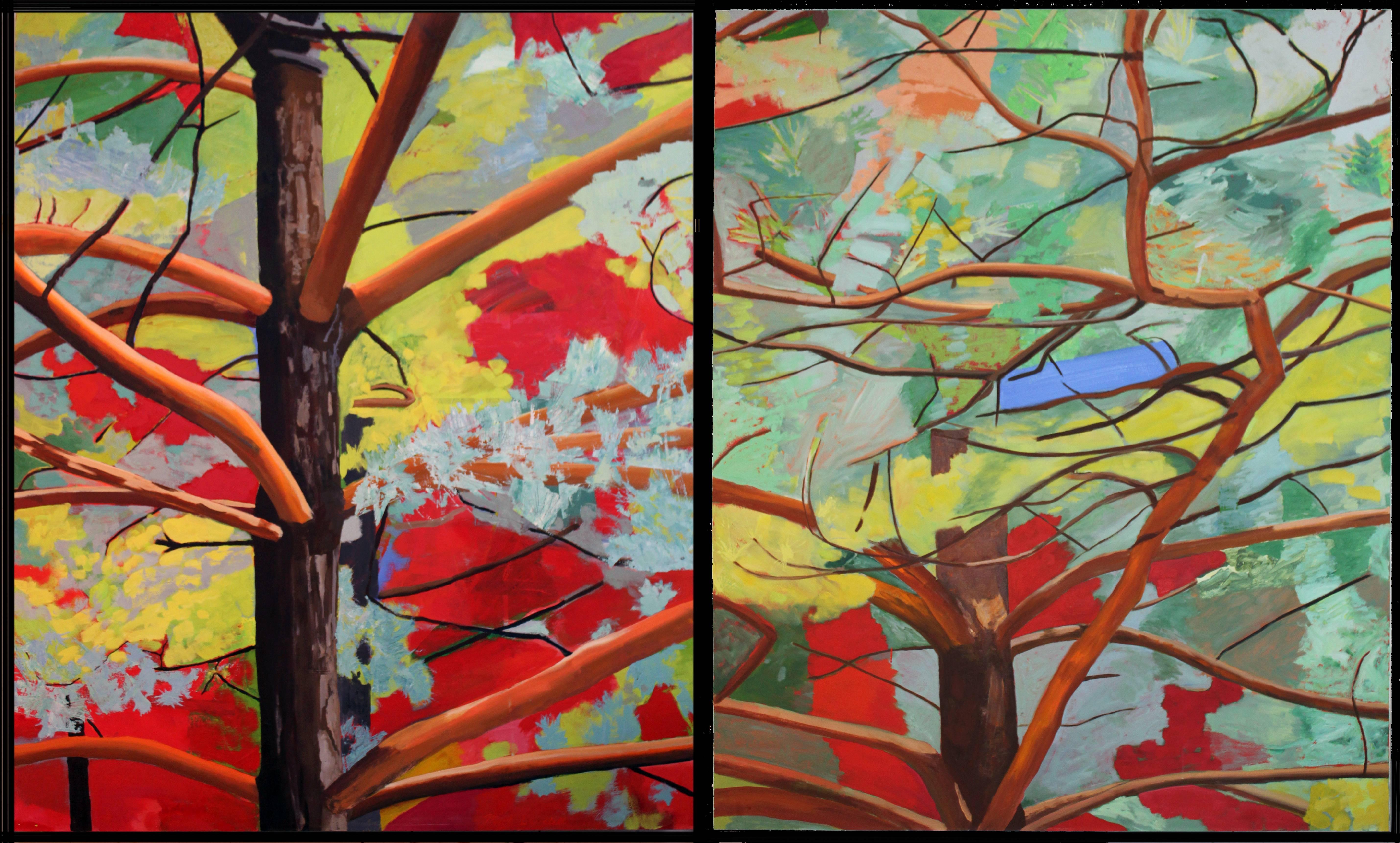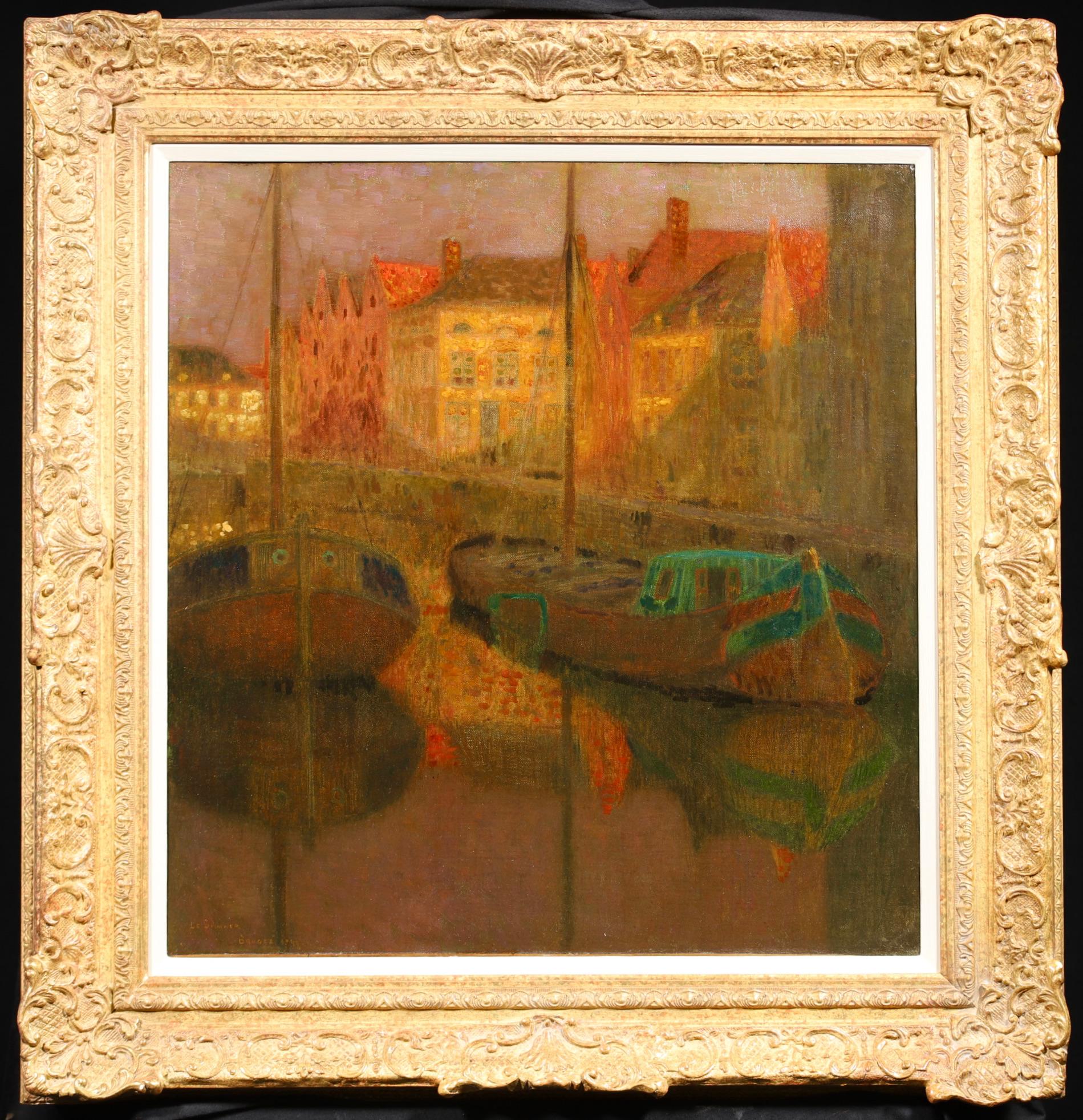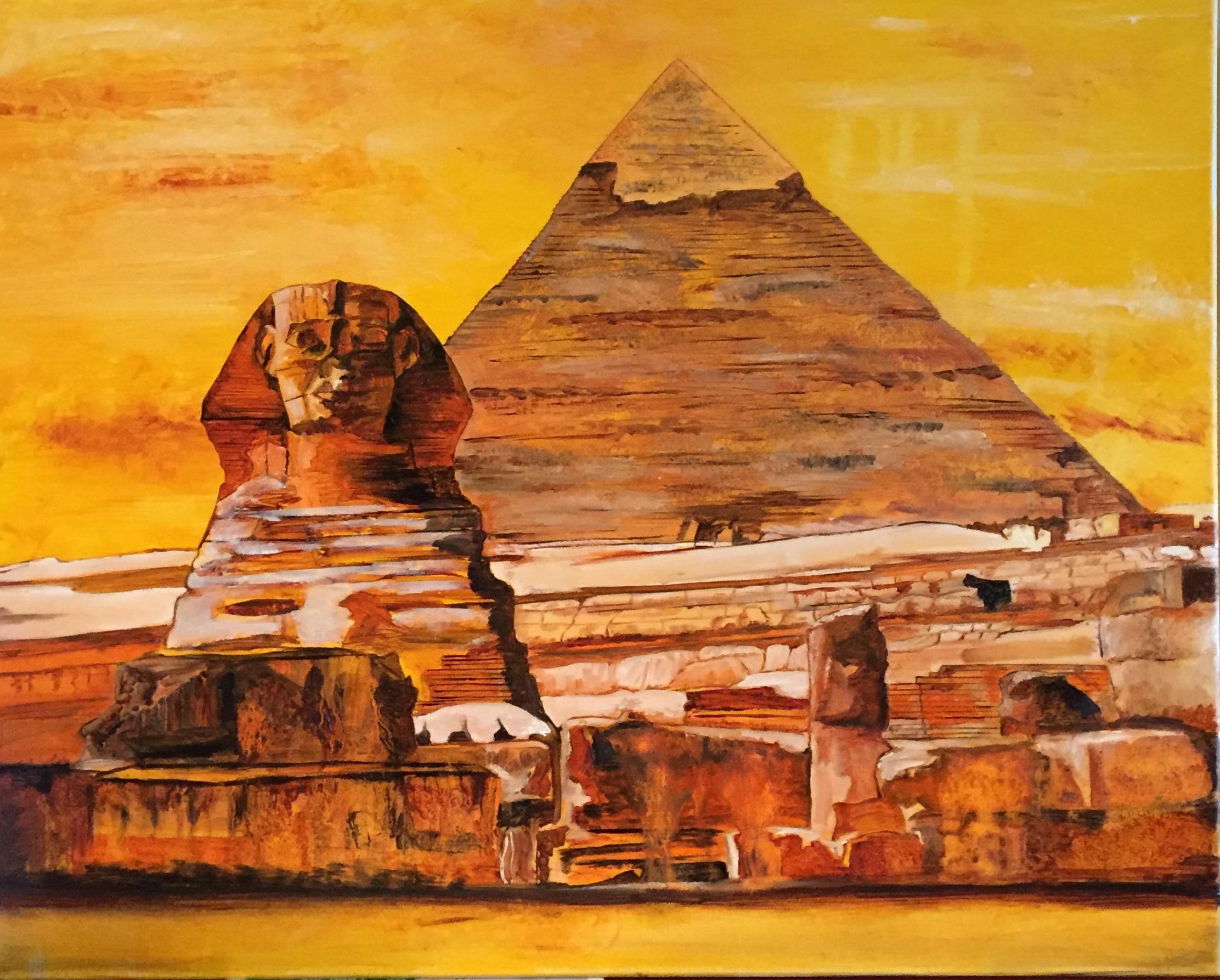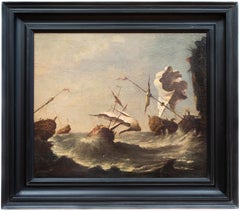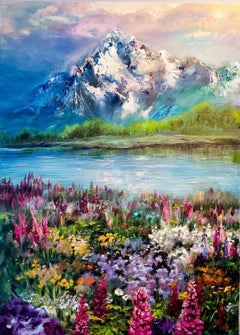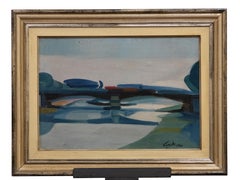
Setting Out in the Fjords 1858 by Swedish Artist Axel Nordgren, Oil on Canvas
View Similar Items
Want more images or videos?
Request additional images or videos from the seller
1 of 12
Axel NordgrenSetting Out in the Fjords 1858 by Swedish Artist Axel Nordgren, Oil on Canvas1858
1858
About the Item
- Creator:Axel Nordgren (Swedish)
- Creation Year:1858
- Dimensions:Height: 33.08 in (84 cm)Width: 42.92 in (109 cm)
- Medium:
- Period:
- Condition:Bright and clear colours, a few, small old retouches. Frame with old patina and some minor flaws. Ready to hang.
- Gallery Location:Stockholm, SE
- Reference Number:1stDibs: LU1445210736202
About the Seller
5.0
Platinum Seller
These expertly vetted sellers are 1stDibs' most experienced sellers and are rated highest by our customers.
Established in 2020
1stDibs seller since 2020
120 sales on 1stDibs
Associations
International Confederation of Art and Antique Dealers' Associations
More From This SellerView All
- Shipping in Stormy Waters, Attributed to Italian Artist Francesco GuardiBy Francesco GuardiLocated in Stockholm, SEThe splendour of the tragic sea Francesco Guardi and maritime painting in Venetian art No Venetian painter was a stranger to the sea. After all, Venice was not only one of the most prominent ports of the Mediterranean, but indeed a city literally submerged in the ocean from time to time. Curiously however, the famous Venetian school of painting showed little interest in maritime motifs, favouring scenes from the iconic architecture of the city rather than seascapes. That is why this painting is a particularly interesting window into not only the painter Francesco Guardi himself – but to the significance of the element of water in art history, in absence as well as in the centre of attention. Whether it be calm, sunny days with stunning views of the palaces alongside the canals of Venice or – more rarely – stormy shipwrecking tragedies at sea, water as a unifying element is integral to the works of painter Francesco Guardi (1712–1793). During his lifetime, Venetian art saw many of its greatest triumphs with names like Tiepolo or Canaletto gaining international recognition and firmly establishing Venice as one of the most vibrant artistic communities of Europe. While the city itself already in the 18th century was something of an early tourist spot where aristocrats and high society visited on their grand tour or travels, the artists too contributed to the fame and their work spread the image of Venice as the city of romance and leisure to an international audience, many of whom could never visit in person. Still today, the iconic image of Venice with its whimsical array of palaces, churches and other historic buildings is much influenced by these artists, many of whom have stood the test of time like very well and remain some of the most beloved in all of art history. It was not primarily subtility, intellectual meanings or moral ideals that the Venetian art tried to capture; instead it was the sheer vibrancy of life and the fast-paced city with crumbling palaces and festive people that made this atmosphere so special. Of course, Venice could count painters in most genres among its residents, from portraiture to religious motifs, history painting and much else. Still, it is the Vedutas and views of the city that seems to have etched itself into our memory more than anything else, not least in the tradition of Canaletto who was perhaps the undisputed master of all Venetian painters. Born into his profession, Francesco lived and breathed painting all his life. His father, the painter Domenico Guardi (1678–1716) died when Francesco was just a small child, yet both he and his brothers Niccolò and Gian Antonio continued in their fathers’ footsteps. The Guardi family belonged to the nobility and originated from the mountainous area of Trentino, not far from the Alps. The brothers worked together on more challenging commissions and supported each other in the manner typical of family workshops or networks of artists. Their sister Maria Cecilia married no other than the artist Giovanni Battista Tiepolo himself, linking the family to the most renowned Venetian name of the time. During almost a decade, Guardi worked in the studio of Michele Giovanni Marieschi, sometimes simply known as Michiel, a painted similar in both style and motif. Canaletto is, however, the artist Guardi is most often compared to since they shared a mutual fascination for depicting the architecture and cityscape of Venice. During the course of his career, Guardi tried his hand in many different genres. He was as swift in painting landscapes, Vedutas of Venice, sacred motifs, interiors and architectural compositions as he was in a number of other motifs. His style is typical of the Venetian school but also distinct and personal once we look a little closer. There is an absolute certainty in the composition, the choice of which sometimes feels like that of a carefully calculated photograph – yet it is also very painterly, in the best sense of the word: fluid, bold, sensitive and full of character. The brushwork is rapid, intense, seemingly careless and extraordinarily minute at the same time; fresh and planned in a very enjoyable mixture. His interiors often capture the breath-taking spacious glamour of the palaces and all their exquisite decor. He usually constructed the motif through remarkably simple, almost spontaneous yet intuitively precise strokes and shapes. The result was a festive, high-spirited atmospheric quality, far away from the sterile and exact likeness that other painters fell victim to when trying to copy Canaletto. The painting here has nothing of the city of Venice in it. On the contrary, we seem to be transported far away into the solitary ocean, with no architecture, nothing to hold on to – only the roaring sea and the dangerous cliffs upon which the ships are just moments away from being crushed upon. It is a maritime composition evoking both Flemish and Italian precursors, in the proud tradition of maritime painting that for centuries formed a crucial part of our visual culture. This genre of painting is today curiously overlooked, compared to how esteemed and meaningful it was when our relationship to the sea was far more natural than it is today. When both people and goods travelled by water, and many nations and cities – Venice among them – depended entirely on sea fare, the existential connection to the ocean was much more natural and integrated into the imagination. The schools and traditions of maritime art are as manifold as there are countries connected to the sea, and all reflect the need to process the dangers and wonders of the ocean. It could symbolize opportunity, the exciting prospects of a new countries and adventures, prospering trade, beautiful scenery as well as war and tragedy, loss of life, danger and doom. To say that water is ambivalent in nature is an understatement, and these many layers were something that artists explored in the most wondrous ways. Perhaps it takes a bit more time for the modern eye to identify the different nuances and qualities of historic maritime paintings, they may on first impression seem hard to differentiate from each other. But when allowing these motifs to unfold and tell stories of the sea in both fiction and reality – or somewhere in between – we are awarded with an understanding of how the oceans truly built our world. In Guardi’s interpretation, we see an almost theatrically arranged shipwrecking scene. No less than five ships are depicted right in the moment of utter disaster. Caught in a violent storm, the waves have driven them to a shore of sharp cliffs and if not swallowed by the waves, crushing against the cliffs seems to be the only outcome. The large wooden ships are impressively decorated with elaborate sculpture, and in fact relics already during Guardi’s lifetime. They are in fact typical of Dutch and Flemish 17th century ships, giving us a clue to where he got the inspiration from. Guardi must have seen examples of Flemish maritime art, that made him curious about these particular motifs. One is reminded of Flemish painters like Willem van de Velde and Ludolf Backhuysen, and this very painting has indeed been mistakenly attributed to Matthieu van Plattenberg...Category
18th Century Old Masters Landscape Paintings
MaterialsCanvas, Oil
$52,011 Sale Price20% OffFree Shipping - Winter Scene With Figures on the Ice by Bengt Nordenberg, Signed, Free ShippingLocated in Stockholm, SEBengt Nordenberg (1822-1902) Swedish Winter Scene With Figures on the Ice oil on canvas signed and dated B. Nordenberg 18(4?)6 canvas size 10.90 x 13.89 inches (27.7 x 35.3 cm) fr...Category
19th Century Figurative Paintings
MaterialsOil, Canvas
- A Soldier Blowing the Trumpet by French Artist Charles Bouchez, Oil on CanvasLocated in Stockholm, SECharles Bouchez (1811-1882) French A Soldier Blowing the Trumpet oil on canvas signed and dated ch. Bouchez 1842 canvas dimensions 6.29 x 4.13 inches (16 x 10.5 cm) frame 10.23 x 7...Category
1840s French School Figurative Paintings
MaterialsOil, Canvas
$1,947 Sale Price20% OffFree Shipping - View of a Dutch Town by Jan van Couver (Hermanus Koekkoek Jr.) ImpressionismBy Jan Van CouverLocated in Stockholm, SEHermanus Koekkoek the Younger was part of the famous Koekkoek artist family: grandson of Johannes Hermanus Koekkoek, nephew of the landscape painter, Barend Cornelis Koekkoek...Category
Late 19th Century Impressionist Landscape Paintings
MaterialsCanvas, Oil
$3,098 Sale Price20% OffFree Shipping - Motif From Långälven in Värmland, Sweden.Located in Stockholm, SEThis enchanting Swedish painting, dated circa 1890, is believed to depict the tranquil waters of Långälven in Värmland, a testament to Ohlson's prowess in capturing the essence of the Swedish countryside. The scene is a gentle narrative, where we witness a family moment frozen in time. Parents stand by their daughter on a wooden dock, poised to embark on a journey across the reflective waters. The young girl, dressed in period attire, appears eager and curious, a universal symbol of youth's anticipation for adventure. Her parents, dressed in the fashion of the late 19th century, exude a sense of calm and assurance. Ohlson's brushwork brings the scene to life with a delicate interplay of light and shadow, mirroring the cloud-speckled sky on the lake's surface. The background is dotted with other vessels, suggesting the shared pleasure of the day's end on the water. Oscar Ohlson (1847–1912), born in Linneryd, Småland, and later settling in Borås, was a multifaceted artist who, after pursuing law, found his true calling in the arts. A student of Alfred Wahlberg...Category
1890s Realist Landscape Paintings
MaterialsCanvas, Oil
- A Day in Venice, 1892Located in Stockholm, SEThis captivating painting by Axel Axelson (1854-1892), titled "A Day in Venice, 1892" illustrates a moment from Venice in the year of 1892. Within the compact dimensions of 24 x 14 c...Category
1890s Realist Landscape Paintings
MaterialsCanvas, Oil
You May Also LikeView All
- "Ebbing Reef" Corals, Large Scale Contemporary Seascape Oil Painting (deep blue)By Karen MarstonLocated in New York, NY60"x144" large scale painting, oil on canvas, created on two joined canvases. The deep blue palette gives a sense of underwater space in this grand depiction of coral reefs. Artist, Karen Marston presents this endangered species in a grand scale to show its beauty and importance to our environment. Karen Marston is a painter living and working in Brooklyn, NY. Her work has been seen in a number of solo exhibitions in New York City. In addition to her 2018 show Harbingers, at the Owen James Gallery in Soho, other recent solos include: 2017’s To Embrace the Whole Sky with the Mind, at Station Independent Projects on the Lower East Side, Demeter’s Wrath in 2016 at the Owen James Gallery and Storm Watch...Category
2010s Contemporary Landscape Paintings
MaterialsOil, Canvas
- Mountain Mystery - Oil Paint by Elena Mardashova - 2023Located in Roma, ITOriginal oil painting on canvas 70X50 cm, entitled Mountain Mystery. Excellent condition.Category
2010s Contemporary Figurative Paintings
MaterialsCanvas, Oil
- Ponte Garibaldi, Rome - Oil on Canvas by A. Vangelli - 1941By Antonio VangelliLocated in Roma, ITPonte Garibaldi is an original oil on canvas realized by the Italian artist Antonio Vangelli (Rome, 1917 – Rome, 2003) in 1941. Hand-signed and dated by the artist on the lower righ...Category
1940s Figurative Paintings
MaterialsCanvas, Oil
- Landscape - Oil on Canvas by G. W. Mote - 1888By George William MoteLocated in Roma, ITLandscape is an original oil painting on canvas, realized by the British artist George William Mote (1832-1909). Hand-signed and dated in red oil color on lower right corner "G.W. M...Category
1880s Landscape Paintings
MaterialsCanvas, Oil
- Summer Ocean - Oil Paint by Elena Mardashova - 2023Located in Roma, ITOriginal oil Painting on canvas 60X50 cm, called Summer Ocean, is created to bring the feeling of the summer sea, fresh air and transparent clear water. Excellent condition.Category
2010s Abstract Expressionist Figurative Paintings
MaterialsCanvas, Oil
- HavenBy Mark LavatelliLocated in Buffalo, NYAn original oil on canvas diptych by American contemporary artist Mark Lavatelli created in 1996. 72" X 122"Category
1990s Expressionist Figurative Paintings
MaterialsCanvas, Oil
Recently Viewed
View AllMore Ways To Browse
Stormy Weather Paintings
Fjord Painting
Fjord Norway
Landscape Sunset Cliffs
Anna Weatherly
Karl Muller
Fjord Oil Painting
Axel Nordgren
Paul Mays
Vintage Beach Painting
Southern Oil Paintings
Auction House
Grand National
American Art Paintings Of New England
Traveling Man
Moon Artist
Mountain Painting Contemporary
Art S Co
